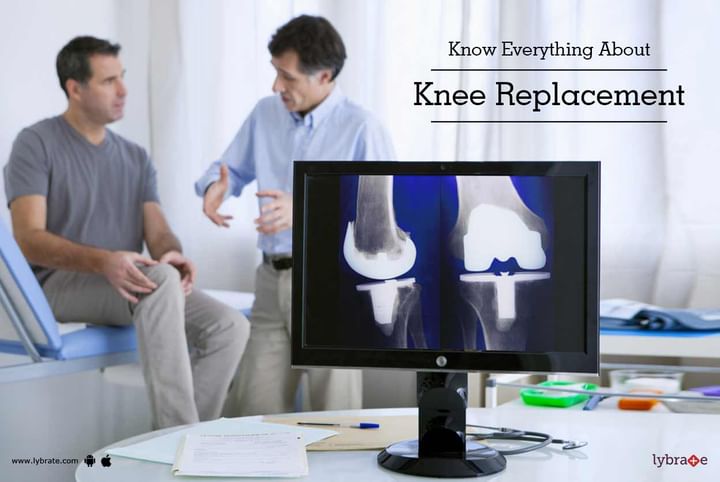Know Everything About Knee Replacement
Knee replacement surgery — also known as knee arthroplasty (ARTH-row-plas-tee) — can help relieve pain and restore function in severely diseased knee joints. During knee replacement, a surgeon cuts away damaged bone and cartilage from your thighbone, shinbone and kneecap and replaces it with an artificial joint made of metal alloys, high-grade plastics and polymers.
Why is it done?
The most common reason for knee replacement surgery is to relieve severe pain caused by osteoarthritis. People who need knee replacement surgery usually have problems walking, climbing stairs, and getting in and out of chairs. Some also have moderate or severe knee pain at rest.
The Procedure
The procedure begins with you being administered general anesthesia, after which, an incision of 9-12 inches is made on the knee. The part of the joint that has been damaged is gotten rid of, following which the surfaces of the bone are redesigned to hold an artificial joint. Cement is used to attach the artificial joint to the shin, knee cap and the thigh bone. Once the fitting is complete, the artificial joint is supported by the surrounding muscles.
Results
For most people, knee replacement provides pain relief, improved mobility and a better quality of life. Consult a doctor about what you can expect from knee replacement surgery.
Three to six weeks after surgery, you generally can resume most daily activities, such as shopping and light housekeeping. Driving is also possible at around three weeks if you can bend your knee far enough to sit in a car and if you have enough muscle control to operate the brakes and accelerator.
After you've recovered, you can enjoy a variety of low-impact activities, such as walking, swimming, golfing or biking. But you should avoid higher impact activities — such as jogging, skiing, tennis and sports that involve contact or jumping. Talk to your doctor about your limitations.
Aftercare
The duration of the hospital stay is around 2-3 days. The effects of the surgery start becoming noticeable within a month of the surgery being carried out. Initially, you may require walking aids. It takes about 5-6 weeks to regain your ability to walk without any external or physical support.
You will have to undergo physical therapy after the surgery to improve your muscle strength. The physiotherapist may prescribe various exercises to strengthen the muscles around the knees. You need to follow certain precautions after the surgery; squatting and kneeling become certain activities which you should avoid. Avoid activities that places undue stress on the knees.



+1.svg)
